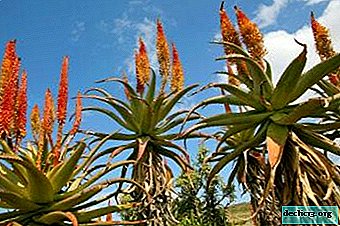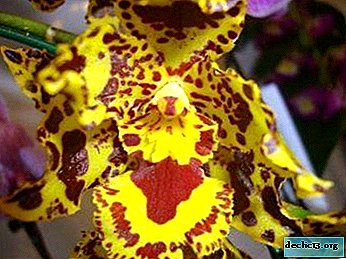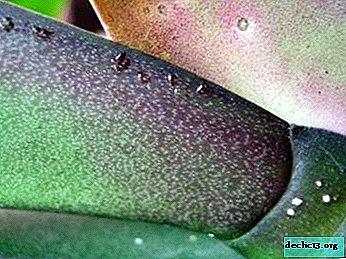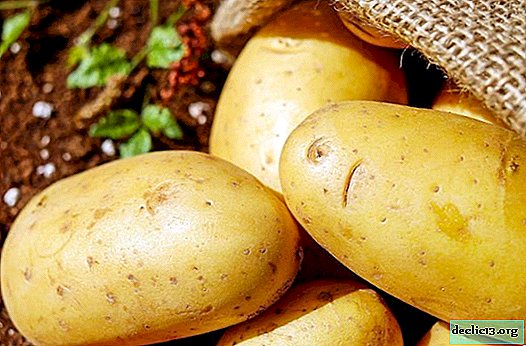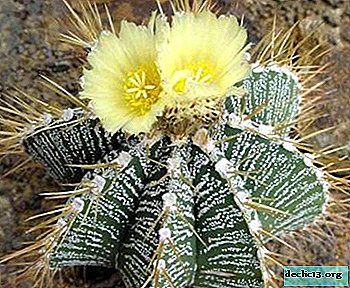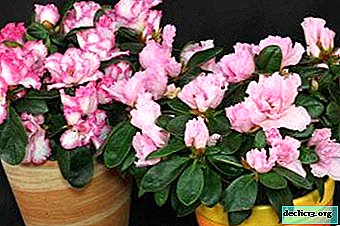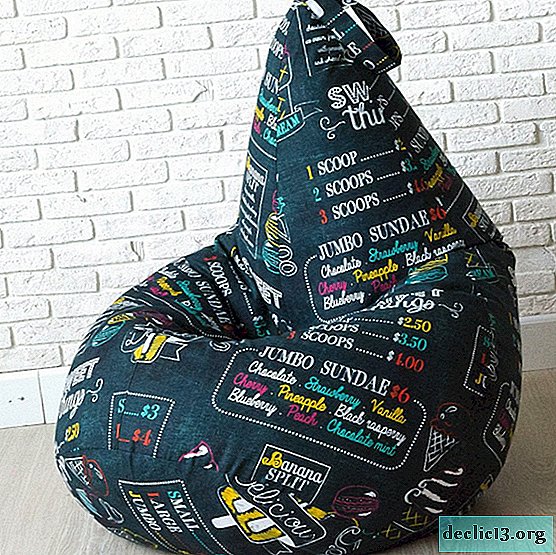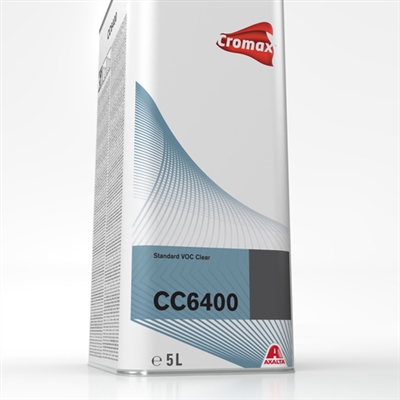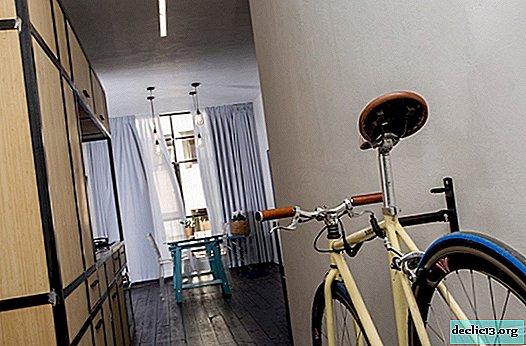Description of the dabel radish. Cultivation, dignity and other information about the Dutch variety

Radish Dabel is one of the most popular varieties of Dutch origin, which can be grown both in open and in closed ground. It differs from other hybrids in its excellent external characteristics and remarkable taste.
Further in the article you will get acquainted with the description of this variety and the features of its cultivation.
Detailed description and description of this variety
Appearance
Dabel is a large-fruited radish variety that produces fruits with an average weight of up to 35 g and a diameter of 4-5 cm. The shape of the radish is regular round, occasionally oval. The surface is smooth, dense, slightly flattened closer to the pole. Thin and smooth skin has a rich red - dark red hue.
A distinctive feature of the variety is a small tops, up to 10 cm high, which facilitates bundling during harvesting. The leaves of the radish are arranged compactly, oblong in shape and rich in light green colors. The radish pulp is white, soft, juicy and slightly spicy in taste. Root crops are not prone to cracking and the appearance of voids, even in the event of a delay in harvesting.
Sowing time
Best landing time:
- Indoor - late autumn - early spring.
- In the open ground, Dabel is sown in April, when the soil warms up sufficiently after winter frosts.
Productivity
 Root crop productivity depends on the density of planting. The variety has a high yield among hybrids. The average yield of this variety is 6-8 kg. root crops with 1 square. m. (from 1 ha - up to 60 tons of final products).
Root crop productivity depends on the density of planting. The variety has a high yield among hybrids. The average yield of this variety is 6-8 kg. root crops with 1 square. m. (from 1 ha - up to 60 tons of final products).
In order to achieve a high-quality crop, hybrid care should include all agricultural techniques (proper irrigation system, top dressing, cultivation).
Where is it recommended to grow?
Recommended cultivation immediately in the open field. Early sowing can be done indoors under the film. In greenhouses, radishes can be grown even in winter.
Disease resistance
A distinctive feature of the Dabel radish is resistance to flowering. Low temperatures provoke a delay in the development of the root crop and the appearance of rifling, so radishes should be sown in open ground only with the onset of constant heat.
Ripening period
The variety belongs to mid-ripening (from sowing seeds to the time of harvesting takes place on average 3-4 weeks. Ripening period depends on the conditions of detention and temperature characteristics of the region.
What soil does it prefer?
Dubel prefers loose, light, acid-neutral soil.
reference! To increase yields, it is recommended to pre-prepare the soil for sowing starting in autumn.To increase soil fertility, you can use fertilizer, which includes:
- 4-5 kg. humus;
- 50 g of superphosphate;
- 40 g of potassium sulfate.
Breeding History
Asia is considered the birthplace of the vegetable, from where it was imported into Europe at the beginning of the 16th century.
Dubel was bred in 2006 in Holland and immediately established itself as a highly resistant variety that is adapted to any weather conditions.
What is the difference from the rest of the species?
 Dabel - one of the fastest-ripening radish varieties. With proper cultivation and care of the plant, root crops grow in 2-3 weeks, when the usual varieties ripen for 4-5 weeks. The variety is resistant to viral infections and tolerates cold temperatures. A distinctive feature of the Dabel cultivar is large root crops, which, due to high-quality selection, ripen at the same time.
Dabel - one of the fastest-ripening radish varieties. With proper cultivation and care of the plant, root crops grow in 2-3 weeks, when the usual varieties ripen for 4-5 weeks. The variety is resistant to viral infections and tolerates cold temperatures. A distinctive feature of the Dabel cultivar is large root crops, which, due to high-quality selection, ripen at the same time.
Advantages and disadvantages
Dabel F1 is very popular due to its high productivity. He was very fond of the owners of personal gardens and personal plots, since the advantages of this variety are many times more than the disadvantages. Of these, it is worth noting:
- good yield;
- early ripening;
- attractive type of root crops;
- good taste;
- the ability to organize planting over large areas.
Separately, it is worth mentioning the beneficial properties of the radish itself.
Pulp varieties:
- It is rich in fiber, vitamins B1, B2, C.
- Contains trace elements: Potassium, Phosphorus, Iron.
- It has an immunostimulating and decongestant effect.
- Stimulates gastric secretion.
- Favorably affects digestion.
- Increases appetite.
The disadvantages include:
- demanding varieties for lighting, fertility, water balance;
- relatively high cost of seeds.
Why and where is it used?
Variety Dabel F1 has excellent taste, so it is perfect for making salads and other cold snacks. Few people know that radish leaves are also edible and can be added to salads in powdered form.
Radish tops contain much more minerals and vitamins than root crops, however, in taste, the leaves are inferior to root crops.
Growing
 To get a good harvest, you must correctly select and prepare the site. The variety shows the best results on fertile, loose soils.. The place should be well lit and protected from the wind. It is better to use areas that were used last year for planting vegetables, which required a large amount of organic matter: potatoes and cucumbers.
To get a good harvest, you must correctly select and prepare the site. The variety shows the best results on fertile, loose soils.. The place should be well lit and protected from the wind. It is better to use areas that were used last year for planting vegetables, which required a large amount of organic matter: potatoes and cucumbers.
Seeds should be planted in a tape way and observe a number of conditions:
- in each tape 4-7 rows;
- the distance between the rows is 20 cm .;
- the distance between the tapes is 60 cm.
Seeds should be deepened into the soil by 2-3 cm and then covered with a film or agrofiber to accelerate germination.
Important! The optimum air temperature during landing is 13-14 ° С.After the first leaves appear, it is necessary to thin out the seedlings. To accelerate growth, you can use mineral fertilizers. Mandatory is the weeding of weeds and periodic loosening of the soil.
Harvesting and storage
Harvesting begins after 20-25 days after sowing, in one approach. Root crops easily break out of the soil. It is better to store in a cool room, as at a warm temperature, root crops become flabby. In bundles, root crops last for 3-5 days, in a purified form - 7-10 days.
Diseases and Pests
Radish Dabel is highly resistant to diseases and pests. However, with late planting, you should be wary of such diseases:
- Bacteriosis. The disease develops due to excess moisture in combination with a tight fit. Bacteriosis manifests itself as small spots on the leaves, which in wet weather are covered with drops of cloudy liquid - bacterial colonies. When the damaged areas dry out, they crumble and crumble.
- Aphid. For the treatment of aphids, the Inta-Vir drug will help perfectly - 1 tablet per 10 liters of water, or Strela - 50 g per 10 liters of water.
- Cruciferous flea. To combat use a mixture of wood ash, lime and tobacco dust in a ratio of 1: 1: 1.
Prevention of various problems

- To prevent shooting, sowing in open ground should be done only in warm weather.
- For the uniform development of root crops, the sequence and dosage of top dressing must be strictly observed.
- Avoid flooding the soil to increase productivity and reduce the likelihood of bacteriosis.
- Thin out the sowing at the initial stage of cultivation to prevent diseases and pests.
Similar varieties
- Rondar. Early ripe variety with round rich red root crops. The variety is also resistant to flowering and has a high yield.
- Celeste. Also applies to early ripening. It has round, bright red root vegetables, with a diameter of up to 3 cm. The pulp is dense, slightly spicy in taste.
- Hybrid early ripe variety. The mass of the root crop is 30-40 g. The color of the root crop is saturated red. The pulp is white, juicy, slightly spicy in taste. Productivity is high up to 3-4 kg per 1 sq. Km. m
Gardeners about the Dabel radish respond exclusively positively. Small which variety can offer such a high yield, excellent marketability and taste. At the same time, Dabel is unpretentious in leaving and has practically no shortcomings.

